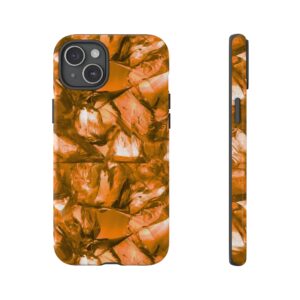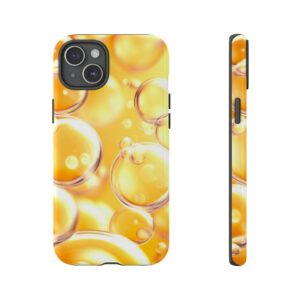Ultimate Guide to Sublimation Printing
In the ever-evolving landscape of digital printing, one term that has gained significant traction is “sublimation printing.” This cutting-edge printing technique has taken the world by storm, offering a plethora of advantages that have revolutionized the way we produce vibrant, high-quality designs on various substrates.
We will dive deep into the realm of sublimation printing, exploring its intricacies, applications, and why it stands as a game-changer in the world of digital printing.
Disclosure: This post contains affiliate links. I receive a small commission at no cost to you when you make a purchase using my links. As an Amazon Associate, I earn from qualifying purchases.
What is Sublimation Printing?
Sublimation printing is a sophisticated and innovative digital printing method that allows for the creation of stunning, full-color, and highly detailed designs on a wide range of materials, including textiles, ceramics, metals, and more.
Sublimation printing is a cutting-edge technique used to transfer intricate, full-color designs onto a wide range of surfaces, including textiles, ceramics, and more.
Unlike traditional printing methods, sublimation uses heat and pressure to turn ink into a gas, allowing it to penetrate the surface of the material. This results in vibrant, long-lasting, and highly detailed prints that are resistant to fading and peeling.
The Sublimation Process Unveiled
1. Ink Sublimation
At the heart of the sublimation printing process lies the unique behavior of sublimation inks. These inks, when heated, undergo a phase transition from a solid to a gas without passing through the liquid stage. This remarkable transformation is what sets sublimation printing apart from other methods.
2. Heat Transfer
The sublimation process involves applying heat and pressure to the printed design, which causes the sublimation inks to turn into gas. This gas then permeates the material’s fibers, becoming a permanent part of the substrate. This fusion results in vivid, fade-resistant, and durable prints that withstand the test of time.
3. Transfer
Next, the printed design is carefully placed face-down onto the desired substrate, whether it’s a t-shirt, ceramic mug, or any other item suitable for sublimation. Secure the paper and substrate together using heat-resistant tape to prevent any movement during the pressing phase.
3. Wide Range of Substrates
One of the most remarkable aspects of sublimation printing is its versatility. This technique can be used on an array of substrates, including polyester fabrics, ceramic mugs, metal plates, and more. The ability to print on diverse materials opens up a world of creative possibilities, making sublimation a favorite choice for crafters.
Applications of Sublimation Printing
1. Apparel and Fashion
Sublimation printing has made a significant impact on the fashion industry. It allows designers to create intricate, all-over prints on garments, resulting in stunning and unique clothing items. From custom t-shirts and sweatshirts to vibrant leggings, sublimation offers endless possibilities for fashion-forward apparel.
2. Personalized Gifts
The ability to print detailed and colorful images on various items has made sublimation printing a go-to choice for personalized gifts. From custom coffee mugs adorned with cherished photos to personalized phone cases, this technique adds a touch of individuality to every gift.
3. Home Decor
Sublimation printing extends its reach to the realm of home decor. From decorative pillows to wall art, it’s now easier than ever to transform living spaces with high-quality, customized designs that reflect personal style and taste.
4. Sports and Activewear
Sports teams and fitness enthusiasts have embraced sublimation printing for its ability to create eye-catching and durable sportswear. Bold team logos, intricate patterns, and vibrant colors are no longer a challenge, thanks to sublimation.
Advantages of Sublimation Printing
1. Vibrant and Long-Lasting Prints
Sublimation printing produces prints that are known for their exceptional vibrancy and longevity. Unlike traditional printing methods, sublimation inks become an integral part of the material, ensuring that colors remain vivid and do not fade, crack, or peel over time.
2. High Detail and Precision
Sublimation printing allows for incredibly detailed and precise prints. Whether it’s intricate graphics or high-resolution photographs, this technique captures every nuance, delivering stunning results.
3. Durability
The durability of sublimation prints is second to none. They are resistant to fading, cracking, and peeling, even after multiple washes or exposure to the elements. This makes sublimation ideal for creating products that stand the test of time.
4. Eco-Friendly
Sublimation printing is an eco-friendly choice as it produces minimal waste. Unlike screen printing, which generates excess ink and materials, sublimation is a clean and efficient process that minimizes environmental impact.
In a world where visual appeal and durability are paramount, sublimation printing emerges as a frontrunner in the realm of digital printing. Its unique ability to infuse vibrant colors and intricate designs into various substrates has opened doors to creative possibilities previously unimagined.
From personalized gifts to fashion-forward apparel and home decor, sublimation printing continues to transform industries and elevate the way we express ourselves through design.
If you’re looking to explore the world of sublimation printing and unlock a universe of colorful possibilities, look no further.
Embrace this innovative technique and experience the difference it can make in creating stunning, long-lasting prints that capture the essence of your vision.





































